NIL
Are Gonzaga and the Big East the big winners from the NCAA’s new revenue sharing rules?
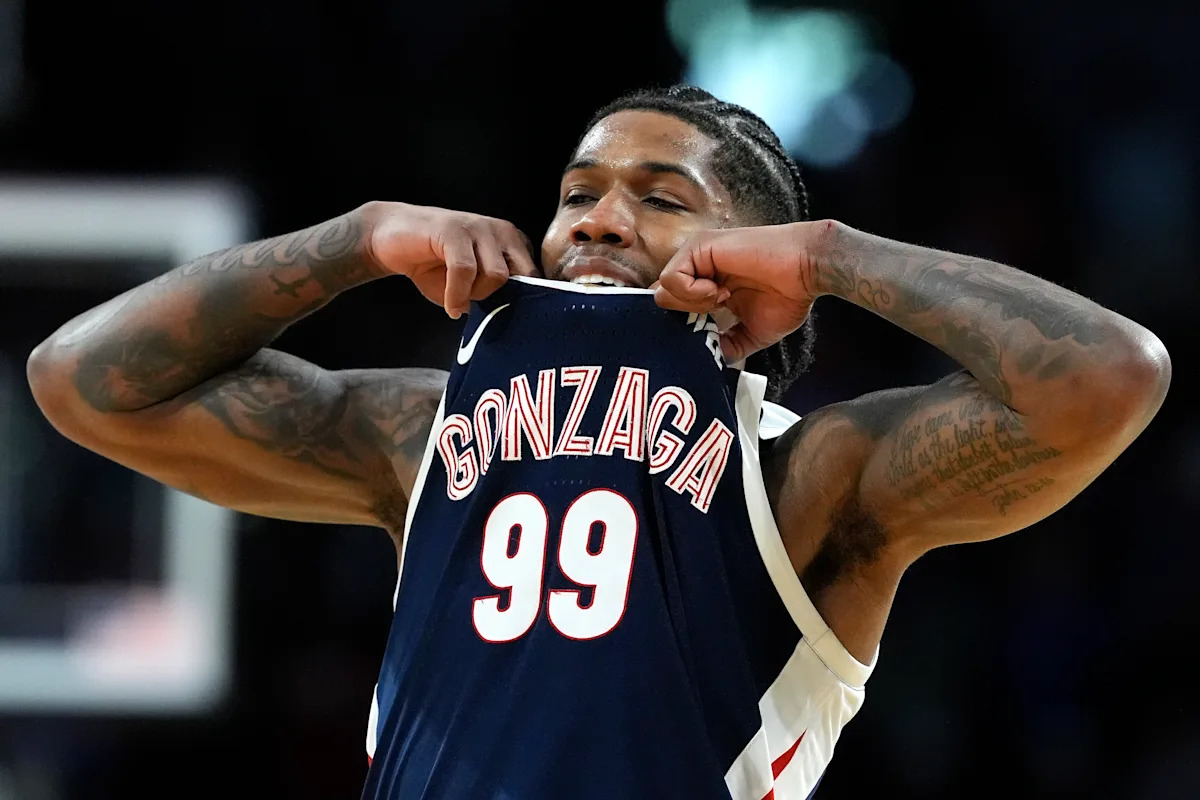
Excuse St. John’s athletic director Ed Kull if he’s highly skeptical of the suggestion that the Big East is poised to become men’s college basketball’s big-budget bully.
Kull can’t fathom a scenario where the sport’s deep-pocketed traditional powers allow Big East programs to outspend them for top-tier talent.
Advertisement
“Unless you’re telling me their collectives are all folding and shutting down, I can’t see how that’s going to happen,” Kull told Yahoo Sports.
The idea that Big East basketball is among the big winners from last Friday’s House vs. NCAA settlement stems from the structure of college sports’ new revenue-sharing rules. Schools can directly distribute a pool of up to $20.5 million to athletes in year 1 (July 2025 to June ‘26) and can give out even more money subsequently as the annual cap escalates.
SEC, Big Ten, Big 12 and ACC schools are preparing to spend most of this year’s sum on football in an effort to remain competitive in the sport that rakes in the most money and bankrolls the rest of an athletic department. The University of Georgia earlier this year revealed that football players will receive 75% of the available money, compared to 15% for men’s basketball, 5% for women’s basketball and 5% for the school’s remaining teams. Texas Tech has previously earmarked 74% to football. Other power-conference football programs are expected to gobble up 70 to 80%.
Those projections leave most Power Four men’s basketball programs with pools of about $2 to $4 million to pay their players. Schools with richer tradition in basketball than football — a Kansas, Kentucky, Duke or North Carolina for example — could conceivably exceed that and distribute up to $5 million to men’s basketball players in an effort to stay ahead of the competition.
Advertisement
The calculus is very different for schools who don’t have to feed the football beast, schools that either don’t have FBS football programs or don’t have realistic aspirations of competing for titles at that level. Big East schools, as the theory goes, can invest heavily in basketball with however much cash they can raise. In the Big East, only UConn has an FBS football program. Butler, Georgetown and Villanova compete in football at the FCS level.
“Basketball is in fact our priority sport here, so that’s where the money’s going first,” Big East commissioner Val Ackerman told Yahoo Sports.
“We’re lucky that all our members are focused on one sport,” Kull added.
The same goes for Gonzaga, perennially men’s college basketball’s best program that doesn’t hail from a power conference. Gonzaga athletic director Chris Standiford acknowledged the “structural advantage” of Gonzaga being able to distribute a higher percentage of its revenue sharing pool to men’s basketball players, but he also deemed the idea that the Zags could now outspend SEC and Big Ten programs a “false narrative.”
Advertisement
Whereas schools from the Power Four conferences are all gearing up to pay their athletes the maximum $20.5 million they’re allowed to, neither the Big East schools nor Gonzaga are likely to even approach that cap figure. They may not have the financial burden of football, but they also don’t have the revenue that comes from massive football media rights deals, sponsorships and ticket sales.
How close to the $20.5 million cap will Big East schools get? There are Big East schools “approaching half,” one source told Yahoo Sports. Another source estimated that Big East schools will ultimately pay athletes anywhere from $7 million to $12 million in revenue-share money, with the majority going to men’s basketball. Both sources noted that Big East schools are raising this money through pleas for alumni donations and corporate sponsorships.They can’t simply rely on existing revenue streams.
Standiford declined to estimate how much Gonzaga will pay men’s basketball players, but he made it clear that without the benefit of football revenue, the Zags also won’t come close to the $20.5 million mark. Gonzaga, Standiford said, is “committed to being competitive.” That doesn’t mean always being the highest bidder. It means raising enough money to make competitive offers to priority recruits and hoping that Gonzaga’s winning track record and history of player development prove persuasive.
Bryan Seeley, a former assistant U.S. attorney who has served for more than a decade as MLB’s vice president of investigations and deputy general counsel, has been announced as the CEO of the College Sports Commission, college sports’ new enforcement entity. (AP)
(ASSOCIATED PRESS)
“When our coaches are out recruiting, we want to be in the conversation financially with student-athletes that our coaches see as a good fit for our program,” Standiford said.
Advertisement
While Gonzaga and the Big East schools may be able to directly allocate more money to men’s basketball players than their Power Four peers, they’re not naive enough to think that an SEC or Big Ten juggernaut is just going to concede a recruiting battle. They expect Power Four schools to try to make up for any financial disadvantage via third-party and booster-backed name, image and likeness deals.
The House vs. NCAA settlement calls for the establishment of a new enforcement entity, the College Sports Commission (CSC), which oversees the rev-share cap management system and NIL Go clearinghouse. The CSC, headed by former MLB vice president of investigations Bryan Seeley, will be responsible for stamping out the pay-for-play deals that have dominated the NIL era of college sports, theoretically capping the market for athletes and ensuring that schools do not exceed the $20.5 million they’re allowed to distribute.
Athletes are required to submit to the clearinghouse all third-party NIL deals that exceed $600 — so basically all of them. The clearinghouse then must determine which deals are for a valid business purpose and are within a “reasonable range of compensation” and which are simply a recruiting incentive.
How will the clearinghouse determine which deals are circumventing NIL rules and which are legitimate? Nobody knows. College coaches and administrators are also in the dark on whether the clearinghouse’s decisions will hold up in court against a legal challenge and on what sorts of investigative or punitive powers the new enforcement arm will possess.
Advertisement
Caitlin Clark appearing in a State Farm commercial or Cooper Flagg hawking New Balance shoes almost certainly wouldn’t trigger any red flags. But what about Tyson Chicken brokering a seven-figure deal with an incoming five-star point guard at Arkansas? Or Nike doing the same for a coveted quarterback transferring to Oregon? Or some school’s collective connecting a wide receiver with a car dealership owned by an affluent alum?
“What everyone is waiting to see is how this NIL clearinghouse will work,” Ackerman, the Big East commissioner, said. “If schools are capped per the terms of the House settlement but they can circumvent the cap through these third-party payments, then I think that any quote-unquote ‘advantage’ that anyone has is out the window. That would threaten this structure that has been crafted, which is intended to create some guardrails and to allow schools to responsibly manage their money.
“If the Wild West we’re in now can’t be managed through this clearinghouse and schools can supplement in significant ways what they’re spending directly, it will remain to be seen who the advantage goes to.”
For either Gonzaga or the Big East to have any semblance of a financial edge, the clearinghouse must be able to combat pay-for-play NIL deals and power-thirsty boosters who flout the rules by depositing money into athletes’ bank accounts under the table.
Advertisement
Count many in college sports circles as having serious doubts that will happen.
Ohio State donors reportedly raised $20 million to pay for the 2024-25 football roster that went on to capture the national championship last January. The men’s basketball rosters everywhere from Kentucky to North Carolina to BYU reportedly will cost well over $10 million next season. As Kull, the St. John’s athletic director noted, it’s hard to give big-money donors the power to help assemble a team for a few years, only to yank it away out of nowhere.
“I know the thought process and the hope was that the settlement would remove collectives from the equation,” Kull said. “I don’t see that happening. An SEC football program might get 80% of the revenue sharing money, but it’s not going to dissuade their boosters in how they’re currently doing NIL for basketball. So I don’t see it being the advantage that we all in the Big East would love it to be.”
The way Standiford sees it, third-party NIL deals are about to be “the new battleground” in college athletics. The Gonzaga athletic director envisions athletic departments investing heavily into telling the stories of their star players, building their individual brands and trying to make them attractive to corporations seeking to partner with college athletes.
“You can compete in an open market for the advantage of your program, versus trying to beat the rules,” Standiford said. “Play by the rules — just do it better than anybody else.”
NIL
Charles Barkley on NIL, transfer portal: ‘You should not have the ability to get a better offer every year’

NBA legend Charles Barkley has not been shy about his thoughts on NIL and the transfer portal. During Saturday’s Kentucky vs. Indiana broadcast, he candidly discussed the landscape again.
Barkley called the game on ESPN alongside Dick Vitale, the first of two games they will work together. Vitale called for “stability” in college basketball – and college sports as a whole – because of the amount of player movement via the portal. He used Indiana as an example since new coach Darian DeVries virtually built the program from scratch.
Advertisement
SUBSCRIBE to the On3 NIL and Sports Business Newsletter
While Barkley acknowledged he’s in favor of athletes making money through NIL, he also called out players staying more than their four years of eligibility. In addition, he disagreed with the idea of athletes being allowed to seek better offers after every season.
“No. 1, I’m not opposed to players getting paid,” Barkley said on the broadcast. “I always want my players to get treated fairly. But I can’t remember the last time I heard the word, COVID. Some of these guys have been in college for six or seven years. If you’re in college for six or seven years, your name better be, ‘Dr. Somebody.’ You should not still be playing college basketball after six or seven years.
“But you should not have the ability to get a better offer every year. That’s not fair to any school that you are affiliated with because I can’t even do that. None of us can do that, take a better – Amazon, anybody or FOX Sports can come and say, ‘Well, we’ll give you more money and you can leave after every year.’ That’s not fair. … We’ve got to put some guardrails on these sports.”
Advertisement
One of the other new parts of the college basketball landscape is G-League players seeking eligibility. The NCAA has changed its approach regarding players who played in the G-League, arguing they were not professional athletes in a way the old rule said. Instead, if those players are within five years of their high school graduation, they could become eligible unless they went through the NBA Draft process or signed an NBA contract.
To Charles Barkley, that’s another area that needs fixing. He does not think former G-League players should be able to play college basketball.
“We’ve got guys playing in the G-League coming back to college sports now,” he said. “I don’t think that’s fair.”
NIL
Charles Barkley sends strong message after historic college football program’s CFP snub

Hall of Famer and ESPN basketball analyst Charles Barkley has an opinion on most everything, and that includes the College Football Playoff committee’s decision to leave 10-2 Notre Dame off of the 12-team bracket.
Barkley and ESPN college basketball analyst Dick Vitale discussed the Fighting Irish’s CFP snub while calling the Indiana-Kentucky game on Saturday night.
“I was disappointed, but you could see it coming in the last couple polls,” Barkley said. “They were creeping up on Miami. And my biggest problem with the whole thing, everybody’s talked about head-to-head. First of all, that was in August.
“They were very close games [against] A&M and at Miami, but your team is not the same in August as it is in December. Notre Dame is playing as well as anybody in the country other than Indiana and probably Ohio State. And I don’t want to leave out the [Georgia] Bulldogs. Kirby Smart, that man can really coach.”

Notre Dame’s exclusion from the bracket after winning its final 10 games all by double-digit margins and being ranked ahead of Miami (10-2) in every CFP poll until the final one, even though neither the Irish nor Hurricanes played in that final week before the bracket was set, will go down as one of the biggest playoff controversies.
Ultimately, it came down to Miami’s 27-24 home win over Notre Dame in Week 1, a field goal with 1:04 remaining.
Miami supporters clamored and complained all along that the Hurricanes should have been ranked ahead of the Irish, given the same record, well before the final bracket was set. But the teams’ seasons went very different directions after that Week 1 meeting.
Notre Dame lost its first two games by a combined four points, including a 41-40 Week 2 loss to Texas A&M (another CFP team), before reeling off those 10 straight wins, most in dominant fashion.
Miami lost twice in a three-game span to unranked Louisville and SMU before regrouping and finishing strong.
The first CFP rankings came out after that second loss, with Miami landing at No. 18 and Notre Dame at No. 10. Because the teams weren’t close in their overall ranking, the head-to-head result didn’t factor in at the time, and that remained the CFP committee’s explanation even as the teams moved closer and closer in the rankings.
Ultimately, they were two spots apart at No. 10/12, separated by BYU, entering last weekend, when the Cougars got blown out by Texas Tech, essentially forcing the committee to consider Notre Dame and Miami side by side. Others have suggested that both teams deserved to be in over 10-3 Alabama, which lost 28-7 to Georgia in the SEC championship game.
Notre Dame has not taken the snub well and declined to participate in a bowl game as a result.
No. 10-seed Miami will play at No. 7 Texas A&M in the first round of the playoffs on Dec. 20.
NIL
President Donald Trump calls NIL a ‘disaster’ for college athletics, Olympics

President Trump this weekend noted the “current state of NIL is simply not sustainable and could cause serious damage to college athletics, and even the Olympics.” Trump during an event hosting members of the 1980 Miracle on Ice team said, “I think that it’s a disaster for college sports. I think it’s a disaster for the Olympics.” Trump: “The colleges are cutting a lot of their — they would call them sort of the ‘lesser’ sports, and they’re losing them like at numbers nobody can believe. They were really training grounds, beautiful training grounds, hard-working, wonderful young people.” Trump added, “A lot of these sports that were training so well would win gold medals because of it. Those sports don’t exist, because they’re putting all their money into football.” Trump: “Colleges cannot afford to be paying the kind of salaries that you’re hearing about” (OUTKICK, 12/13). Trump said of overhauling NIL in college sports, “Something ought to be done, and I’m willing to put the federal government behind it. And if it’s not done fast, you’re going to wipe out colleges” (USA TODAY, 12/12).
NIL
ESPN FPI has 2 teams tied as College Football Playoff favorites

If you can’t pick one favorite, maybe it’s wise to pick two. That certainly seems to be the logical play with ESPN, as their FPI rankings give two teams an even chance to win the national title– even beyond the tenth of a percent. FPI is a slightly controversial prediction index that ties past performance into a mathematical attempt to predict future results.
Throughout the 2025 season, ESPN not only ranked the teams, but forecast their chance to win their respectives leagues, to earn a CFP berth, and even to win the CFP title. But heading into the opening week of CFP play, two teams are in exactly the same shape on top of ESPN’s ranking of most likely teams to win the national title.
FPI’s title favorites
Both Ohio State and Indiana are given a 25.9% chance to win the CFP title. Interestingly, Ohio State is slightly more likely to reach the title game, in ESPN’s reckoning (a 45% chance for the Buckeyes against a 43.1% chance for Indiana). The two are massive co-favorites, as ESPN’s third team in terms of title likelihood is Georgia, with an 11.6% shot at winning the title.
The Remainder of the CFP field
The only other teams with a better than 10% chance at the championship are Texas Tech and Oregon. The Red Raiders are rated at a 10.9% chance to win the title. The Ducks are rated with a 10.3% chance to grab the title.
No team outside of those five has a greater than 4.8% chance at winning the title– with that particular figure being linked to Ole Miss’s title chances. ESPN’s computers certainly don’t think well of the two Group of Five teams, as ESPN gives both Tulane and James Madison a 0.1% chance at winning the CFP crown. James Madison is rated with an 0.5% chance of reaching the title game, while Tulane’s chance is 0.4%.
Confusion reigns about FPI’s ratings
The math-related details behind the CFP can be complicated. 6-6 Penn State is still FPI’s No. 17 team in the nation, while 5-7 Auburn is No. 26. FPI also greatly appreciated Notre Dame, ranking the Irish third nationally. That’s comfortably ahead of the Miami and Alabama teams that grabbed the last CFP spots instead of the Irish (Miami ranks seventh and Notre Dame eighth at all. But when it comes to title chances, the FPI is all in on two teams in an exactly equal measure.

NIL
Charles Barkley on NIL, transfer portal: ‘You should not have the ability to get a better offer every year’
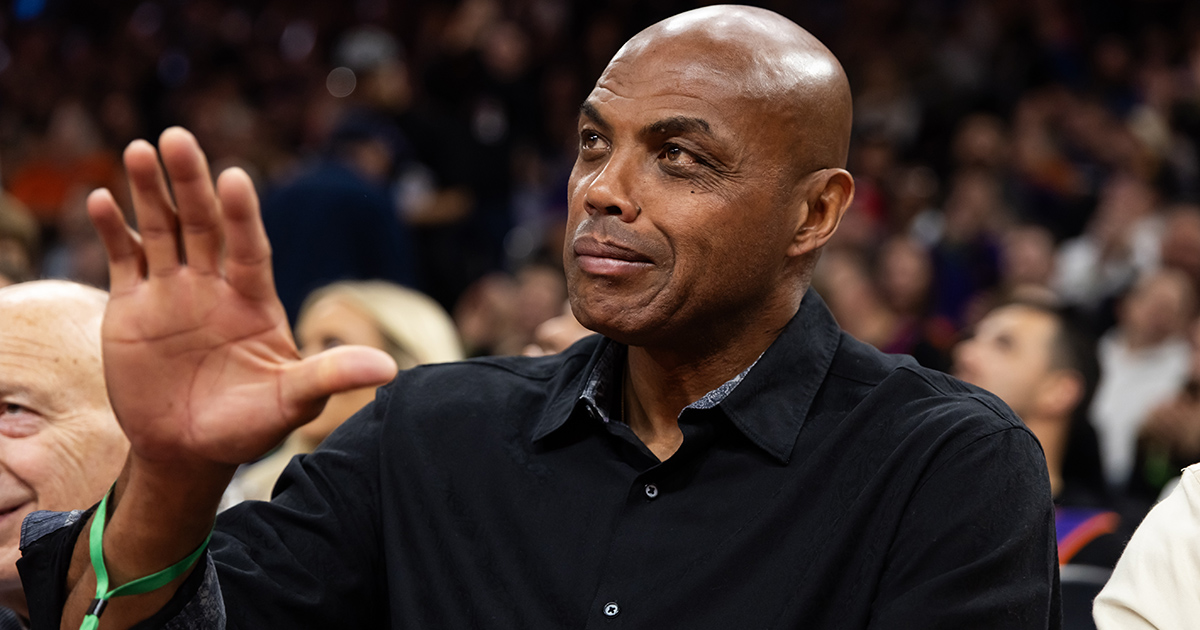
NBA legend Charles Barkley has not been shy about his thoughts on NIL and the transfer portal. During Saturday’s Kentucky vs. Indiana broadcast, he candidly discussed the landscape again.
Barkley called the game on ESPN alongside Dick Vitale, the first of two games they will work together. Vitale called for “stability” in college basketball – and college sports as a whole – because of the amount of player movement via the portal. He used Indiana as an example since new coach Darian DeVries virtually built the program from scratch.
SUBSCRIBE to the On3 NIL and Sports Business Newsletter
While Barkley acknowledged he’s in favor of athletes making money through NIL, he also called out players staying more than their four years of eligibility. In addition, he disagreed with the idea of athletes being allowed to seek better offers after every season.
“No. 1, I’m not opposed to players getting paid,” Barkley said on the broadcast. “I always want my players to get treated fairly. But I can’t remember the last time I heard the word, COVID. Some of these guys have been in college for six or seven years. If you’re in college for six or seven years, your name better be, ‘Dr. Somebody.’ You should not still be playing college basketball after six or seven years.
“But you should not have the ability to get a better offer every year. That’s not fair to any school that you are affiliated with because I can’t even do that. None of us can do that, take a better – Amazon, anybody or FOX Sports can come and say, ‘Well, we’ll give you more money and you can leave after every year.’ That’s not fair. … We’ve got to put some guardrails on these sports.”
One of the other new parts of the college basketball landscape is G-League players seeking eligibility. The NCAA has changed its approach regarding players who played in the G-League, arguing they were not professional athletes in a way the old rule said. Instead, if those players are within five years of their high school graduation, they could become eligible unless they went through the NBA Draft process or signed an NBA contract.
To Charles Barkley, that’s another area that needs fixing. He does not think former G-League players should be able to play college basketball.
“We’ve got guys playing in the G-League coming back to college sports now,” he said. “I don’t think that’s fair.”
NIL
$29 million college football coach surges as favorite to replace Sherrone Moore at Michigan

Michigan began the week coming off a 9–3 regular season, with a Citrus Bowl matchup against No. 13 Texas on December 31 looming.
Instead, an internal investigation and a subsequent arrest that led to criminal charges left the Wolverines without head coach Sherrone Moore, forcing the athletic department into a high-stakes national search for his successor.
Moore, hired Jan. 26, 2024, and elevated from Michigan’s staff, completed two seasons as Michigan’s head coach with a record of 18-8.
Several names have circulated in the wake of Moore’s dismissal, but few have drawn more immediate attention than Arizona State head coach Kenny Dillingham, who, according to Kalshi, emerged as the market favorite with a 58% implied probability to land the Michigan job.
This puts him well ahead of Alabama’s Kalen DeBoer (19%), Washington’s Jedd Fisch (13%), and Los Angeles Chargers defensive coordinator Jesse Minter (3%).
NEW: Kenny Dillingham has surged to a 58% chance on Kalshi to be the next head coach of Michigan Football. pic.twitter.com/bi5vATin0M
— Kalshi Sports (@KalshiSports) December 13, 2025
Dillingham’s Sun Devils rose from a 3-9 debut season to an 11-3, Big 12-championship campaign in 2024, then followed it with another solid 8-4 finish in 2025 despite losing former four-star quarterback Sam Leavitt midway through the year.
At just 34, the Arizona State alumnus has already rebuilt his alma mater into a conference champion and College Football Playoff participant, helping explain why his name has emerged as a focal point in both media coverage and prediction markets.
After that breakout 2024 season, Arizona State extended Dillingham through 2029, raising his 2025 base salary to $5.8 million as part of a $29 million agreement.

NCAA transfer portal rule changes moved the primary window to Jan. 2-16 and limited the special window after coaching changes to 15 days, beginning five days after a new hire is announced, giving Michigan a clear incentive to move quickly to retain players and recruits.
That timetable, combined with the expectation to uphold the championship standard Moore inherited, has accelerated Michigan’s process, with a decision expected within the coming weeks.
Read More at College Football HQ
- $1.3 million college football coach reportedly accepts head coaching job
- First-team All-Conference WR enters college football transfer portal
- College football program loses 11 players to transfer portal
- $2.5 college football coach reportedly accepts new head coaching job after winning season
-

 Rec Sports3 weeks ago
Rec Sports3 weeks agoFargo girl, 13, dies after collapsing during school basketball game – Grand Forks Herald
-

 Motorsports3 weeks ago
Motorsports3 weeks agoCPG Brands Like Allegra Are Betting on F1 for the First Time
-
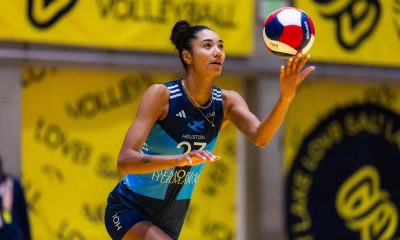
 Sports3 weeks ago
Sports3 weeks agoTwo Pro Volleyball Leagues Serve Up Plans for Minnesota Teams
-

 Sports3 weeks ago
Sports3 weeks agoUtah State Announces 2025-26 Indoor Track & Field Schedule
-
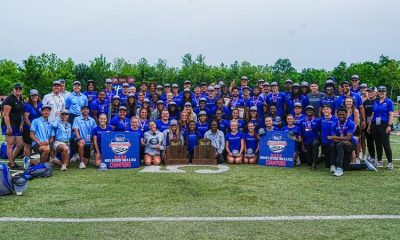
 Sports3 weeks ago
Sports3 weeks agoSycamores unveil 2026 track and field schedule
-
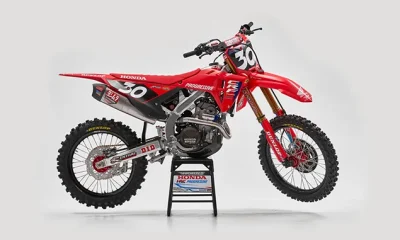
 Motorsports2 weeks ago
Motorsports2 weeks agoJo Shimoda Undergoes Back Surgery
-

 Motorsports2 weeks ago
Motorsports2 weeks agoRedemption Means First Pro Stock World Championship for Dallas Glenn
-

 Sports3 weeks ago
Sports3 weeks agoTexas volleyball vs Kentucky game score: Live SEC tournament updates
-

 Rec Sports2 weeks ago
Rec Sports2 weeks agoRobert “Bobby” Lewis Hardin, 56
-

 Rec Sports2 weeks ago
Rec Sports2 weeks agoHow this startup (and a KC sports icon) turned young players into card-carrying legends overnight
























